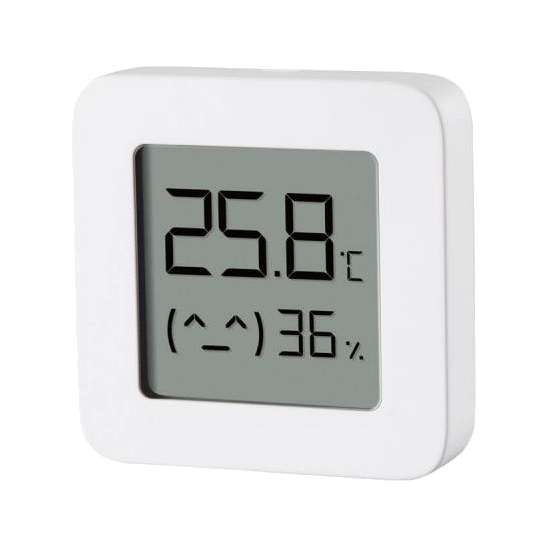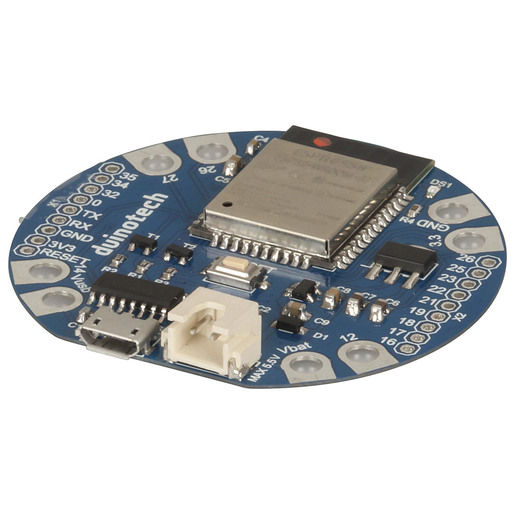Cheap Mi Xiaomi BLE LCD Thermometers into Home Assistant
LCD Sensor Product
https://www.aliexpress.com/item/4001110925366.html"XIAOMI Mijia Bluetooth Thermometer 2 Wireless Smart"
Sensors are around NZ$8.50 incl GST when I bought 4 of them.

Goal
Use esphome in an ESP32 dev board to pull the values of these temp sensors and integrate them into home assistant.Howto
I followed this youtube howto from a year or so back. It is mostly correct.Part 1 https://www.youtube.com/watch?v=Be5zWukjV9I&t;
Part 2 https://www.youtube.com/watch?v=l5ea7lQWpMk
Summary - configuring the devices
--Turn the units on (do this one at a time if you have multiple)--Go to the TELink Flasher page https://pvvx.github.io/ATC_MiThermometer/TelinkMiFlasher.html. I suggest doing this on your phone as it needs to be a device with bluetooth.
--Use the tool to connect to the device, and grab the Mi Keys. Note them down. You won't need them if flashing the custom ATC firmware (this is a better way), but keep for future if ever needed. it is possible though to do this with the stock Xiaomi firmware.
--Flash the latest custom ATC firmware (it is already loaded in the web page)
--Check the website below if you want to know what the settings do (eg you can change to Fahrenheit, remove the little comfort smiley face, and extend the battery life with less reporting)
https://github.com/atc1441/ATC_MiThermometer
--For Advertising type, choose "MIJIA (Mi Home)". Previous notes (including the howto youtube video) said "Mi" or "Mi Like", but this works for me.
--Take note of the new name of the device, it will be something like ATC_91E1BB (which is the end of the MAC address)
Summary - ESPHome
-- Use ESPHome to flash the ESP32 (instructions, including the Home Assistant integration is elsewhere, but it is pretty simple once the concepts are grasped)-- An example (my esphome config file) is below. You as minimum need to remember the esp32_ble_tracker: line and one config for each sensor.
-- Note that the Bindkey is a dummy key (with the ATC firmware you just need the dummy key)
-- Put the MAC address for the device(s) and label the Temp/Humidity/Battery for each of the devices with unique names. The MACS all appear to start with A4:C1:38 (and then the rest is contained in the name). You can find the full MAC with the TELink page if needed.
Esphome config
esphome: name: bttemps esp32: board: nodemcu-32s # framework: # type: arduino esp32_ble_tracker: # Enable logging logger: # Enable Home Assistant API api: encryption: key: "xxxxxxxxxxxxxxxxxxxxxxxxxxxxx" ota: password: "xxxxxxxxxxxxxxxxxxxxxxxxxxxxxxxxxxxxxx" wifi: ssid: !secret wifi_ssid password: !secret wifi_password # Enable fallback hotspot (captive portal) in case wifi connection fails ap: ssid: "BtTemps Fallback Hotspot" password: "xxxxxxxxxxxxxxxxxxxx" captive_portal: # Web server for monitoring and control web_server: port: 80 auth: username: user password: !secret web_server_password # MQTT Monitoring mqtt: broker: 192.168.1.256 topic_prefix: esphome/bttemps username: username password: !secret mqtt_password ################################################################################### ## Help with Mi Bluetooth Temp Sensors ## Youtube Howto https://www.youtube.com/watch?v=l5ea7lQWpMk&t=0s ## https://pvvx.github.io/ATC_MiThermometer/TelinkMiFlasher.html ## https://esphome.io/components/sensor/xiaomi_ble.html?highlight=ble#lywsd03mmc ## Tasmota Info: https://tasmota.github.io/docs/Bluetooth/ ################################################################################### sensor: - platform: xiaomi_lywsd03mmc # ATC_121212 mac_address: "A4:C1:38:12:12:12" #dummy bindkey bindkey: "e2f413da42899a0c1c8f3bfa17e4511d5" temperature: name: "Fridge Temperature (BTTS01)" humidity: name: "Fridge Humidity (BTTS01)" battery_level: name: "Fridge Monitor Battery Level (BTTS01)" - platform: xiaomi_lywsd03mmc # ATC_343434 mac_address: "A4:C1:38:34:34:34" #dummy bindkey bindkey: "e5f418daf699a0c188f7bf917e1565d8" temperature: name: "Freezer Temperature (BTTS02)" humidity: name: "Freezer Humidity (BTTS02)" battery_level: name: "Freezer Monitor Battery Level (BTTS02)" - platform: xiaomi_lywsd03mmc # ATC_5A5A5A mac_address: "A4:C1:38:5A:5A:5A" #dummy bindkey bindkey: "eef418eaf69910c18843bfd17e4565d7" temperature: name: "Lower Fridge Temperature (BTTS03)" humidity: name: "Lower Fridge Humidity (BTTS03)" battery_level: name: "Lower Fridge Battery Level (BTTS03)" - platform: xiaomi_lywsd03mmc # ATC_BCBCBC mac_address: "A4:C1:38:BC:BC:BC" #dummy bindkey bindkey: "eaf415daf699a0c188f3bfd17e4565d6" temperature: name: "Lower Freezer Temperature (BTTS04)" humidity: name: "Lower Freezer Humidity (BTTS04)" battery_level: name: "Lower Freezer Monitor Battery Level (BTTS04)"
Notes
-- Remember the devices will only connect to one host at a time, so if it is connected to the ESP32 you can't change parameters with the TELink app.Jaycar Specific Duinotech ESP32 Notes
I couldn't wait for some Dev boards from China and Jaycar had some half price ESP32 boards so I grabbed a couple to play withhttps://www.jaycar.co.nz/duinotech-wearable-esp32-development-board/p/XC3810
CH340 Serial-USB in Ubuntu
Getting the CH340 based serial working in ubuntu was annoying, I suspect however in windows you'd need to install the driver. The link I used to troubleshoot is below as errors show up in logs for BRLTTY. This is apparently what unix uses to gain access to serial ports by users.https://unix.stackexchange.com/questions/670636/unable-to-use-usb-dongle-based-on-usb-serial-converter-chip
$ for f in /usr/lib/udev/rules.d/*brltty*.rules; do sudo ln -s /dev/null "/etc/udev/rules.d/$(basename "$f")" done $ sudo udevadm control --reload-rules $ sudo systemctl mask brltty.path Created symlink /etc/systemd/system/brltty.path → /dev/null.
Wifi Issues
These were a problem (I had a couple of esphome based projects I wanted to play with) as when I connected them, the logs showed they wouldn't connect to wifi. Logs showed this:"[W][wifi_esp32:495]: Event: Disconnected ssid='myaccesspoint' bssid=[redacted] reason='Auth Expired'"
I tried with multiple wifi settings and a couple of access points.
I was about to send them back and wait for the chinese boards, but found this:
https://github.com/espressif/arduino-esp32/issues/2144
There is a bit of a jumble of information in there, but it appears it is a voltage issue when using the UART. I found a solution that if I pulled the 0 pin to ground via a resistor (they suggest 330 Ohm) it seems to boot and connect to wifi stably. Time will tell. Also pulling 0 low was often easier to flash the firmware when needed. Having the resistor off seems to not work reliability.

--
CategoryHomeAutomation
CategoryESP32
CategoryHomeAssistant
CategoryMQTT
CategoryESPHome
CategoryAddedToZorruno